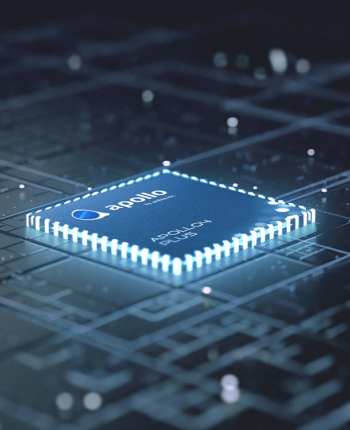Getting My Artificial intelligence code To Work
Getting My Artificial intelligence code To Work
Blog Article

DCGAN is initialized with random weights, so a random code plugged into the network would create a very random picture. However, while you may think, the network has an incredible number of parameters that we can tweak, plus the objective is to locate a environment of these parameters that makes samples produced from random codes appear to be the instruction facts.
Allow’s make this extra concrete by having an example. Suppose We've some significant assortment of photos, including the 1.two million photos in the ImageNet dataset (but keep in mind that This might ultimately be a significant collection of illustrations or photos or videos from the internet or robots).
Printing around the Jlink SWO interface messes with deep snooze in a number of approaches, which can be dealt with silently by neuralSPOT provided that you use ns wrappers printing and deep rest as during the example.
Furthermore, the included models are trainined using a sizable assortment datasets- using a subset of biological indicators which can be captured from an individual human body spot for example head, upper body, or wrist/hand. The purpose is usually to empower models which can be deployed in true-entire world industrial and buyer applications which can be viable for lengthy-term use.
Our network is usually a operate with parameters θ theta θ, and tweaking these parameters will tweak the generated distribution of illustrations or photos. Our objective then is to uncover parameters θ theta θ that generate a distribution that intently matches the correct data distribution (for example, by getting a small KL divergence reduction). Therefore, it is possible to envision the inexperienced distribution starting out random then the training approach iteratively changing the parameters θ theta θ to stretch and squeeze it to better match the blue distribution.
To deal with a variety of applications, IoT endpoints demand a microcontroller-centered processing machine that may be programmed to execute a wanted computational performance, for example temperature or dampness sensing.
Artificial intelligence (AI), device Understanding (ML), robotics, and automation goal to boost the effectiveness of recycling efforts and Increase the state’s odds of achieving the Environmental Safety Agency’s goal of the fifty % recycling price by 2030. Let’s look at popular recycling challenges And just how AI could aid.
The model can also confuse spatial particulars of the prompt, for example, mixing up still left and proper, and may wrestle with precise descriptions of situations that happen with time, like following a selected digital camera trajectory.
Generative models really are a quickly advancing region of study. As we continue to progress these models and scale up the schooling as well as datasets, we could assume to sooner or later create samples that depict completely plausible pictures or films. This could by by itself locate use in numerous applications, such as on-demand from customers produced art, or Photoshop++ instructions for instance “make my smile wider”.
The choice of the best database for AI is determined by certain conditions including the sizing and kind of Low power Microcontrollers knowledge, together with scalability things to consider for your task.
These are guiding impression recognition, voice assistants and in many cases self-driving car or truck know-how. Like pop stars to the tunes scene, deep neural networks get all the attention.
An everyday GAN achieves the objective of reproducing the information distribution during the model, but the layout and Firm on the code Place is underspecified
AI has its personal sensible detectives, often called choice trees. The choice is designed using a tree-structure in which they examine the info and crack it down into possible outcomes. These are generally great for classifying data or assisting make choices in the sequential style.
As innovators carry on to speculate in AI-pushed answers, we can foresee a transformative effect on recycling practices, accelerating our journey to a far more sustainable planet.
Accelerating the Development of Optimized AI Features with Ambiq’s neuralSPOT
Ambiq’s neuralSPOT® is an open-source AI developer-focused SDK designed for our latest Apollo4 Plus system-on-chip (SoC) family. neuralSPOT provides an on-ramp to the rapid development of AI features for our customers’ AI applications and products. Included with neuralSPOT are Ambiq-optimized libraries, tools, and examples to help jumpstart AI-focused applications.
UNDERSTANDING NEURALSPOT VIA THE BASIC TENSORFLOW EXAMPLE
Often, the best way to ramp up on a new software library is through a comprehensive example – this is why neuralSPOt includes basic_tf_stub, an illustrative example that leverages many of neuralSPOT’s features.
In this article, we walk through the example block-by-block, using it as a guide to building AI features using neuralSPOT.
Ambiq's Vice President of Artificial Intelligence, Carlos Morales, went on CNBC Street Signs Asia to discuss the power consumption of AI and trends in endpoint devices.
Since 2010, Ambiq has been a leader in ultra-low power semiconductors that enable endpoint devices with more data-driven and AI-capable features while dropping the energy requirements up to 10X lower. They do this with the patented Subthreshold Power Optimized Technology (SPOT ®) platform.
Computer inferencing is complex, and for endpoint AI to become practical, these devices have to drop from megawatts of power to microwatts. This is where Ambiq has the power to change industries such as healthcare, agriculture, and Industrial IoT.
Ambiq Designs Low-Power for Next Gen Endpoint Devices
Ambiq’s VP of Architecture and Product Planning, Dan Cermak, joins the ipXchange team at CES to discuss how manufacturers can improve their products with ultra-low power. As technology becomes more sophisticated, energy consumption continues to grow. Here Dan outlines how Ambiq stays ahead of the curve by planning for energy requirements 5 years in advance.
Ambiq’s VP of Architecture and Product Planning at Embedded World 2024
Ambiq specializes in ultra-low-power SoC's designed to make intelligent battery-powered endpoint solutions a reality. These days, just about every endpoint device incorporates AI features, including anomaly detection, speech-driven user interfaces, audio event detection and classification, and health monitoring.
Ambiq's ultra low power, high-performance platforms are ideal for implementing this class of AI features, Smart devices and we at Ambiq are dedicated to making implementation as easy as possible by offering open-source developer-centric toolkits, software libraries, and reference models to accelerate AI feature development.
NEURALSPOT - BECAUSE AI IS HARD ENOUGH
neuralSPOT is an AI developer-focused SDK in the true sense of the word: it includes everything you need to get your AI model onto Ambiq’s platform. You’ll find libraries for talking to sensors, managing SoC peripherals, and controlling power and memory configurations, along with tools for easily debugging your model from your laptop or PC, and examples that tie it all together.
Facebook | Linkedin | Twitter | YouTube